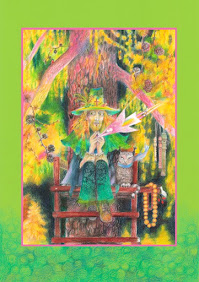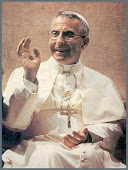I lifted this article whole (and shamelessly) from The Daily Beast.
For any readers not familiar with Bishop Gene Robinson he is the first openly gay Anglican bishop in the US.
I love this new pope. I pray for him every day—for his ministry, his safety, and the daunting tasks that lay before him. I like all the connotations of “Francis,” the papal name he took, conjuring the saint whose humility, sympathy for the fragile condition of humankind, and his commitment to the poor still are both exemplary and legendary.
But I am under no illusions that the journey ahead will be easy for this new pope, assuming that he continues to move in the directions he has thus far signaled. And let’s be clear: Pope Francis has, so far, only changed the tenor and tone of the voice of the Church he leads. That is no small thing, of course, when most Catholics and non-Catholics alike experienced his predecessor as aloof, hierarchical, and pretentious.
Perhaps most dramatic in that change of tone came in his question, after he was asked about gay priests: “Who am I to judge?” Who indeed? His immediate predecessors seemed not to hesitate in heaping judgment on homosexuals, women (especially those who made the excruciating decision to have an abortion), the divorced, and a vast array of people who fell short of the Vatican’s moral ideal (exempting at times, of course, members of the Church’s own clergy and hierarchy from those same ideals).
How odd that the leader of the Catholic Church would make big news, espousing an attitude promoted by Jesus of Nazareth himself. Jesus dramatically lived out the command to “judge not,” so why would it be such news when his followers (not to mention the Pope!) would follow in his humble, non-judgmental footsteps?! It is only a newsworthy development because there had been little evidence of non-judgmental and loving acceptance by his predecessors.
In other words, so far, so good—but it is only a good beginning. The hard work lies ahead: There is more to the Christian enterprise than merely being more kind, more sympathetic.
One of my favorite old sayings goes like this: “It’s not enough to pull drowning people out of a raging stream; we must walk back upstream, and see who is throwing them in in the first place!” Charity (pulling people out of whatever raging stream they’re in, like poverty, disease, discrimination, hunger) is a great and cherished tradition. Nothing wrong with it—as far as it goes. In addition to rescue and charity work, people of faith—indeed all who long for justice—must also do the hard, systemic work of changing the systems that cause and trap people in demeaning, dehumanizing conditions in the first place. Some of those oppressive systems are found in the Church itself! Not just the pope’s church, but my church and every religious community of believers.
If Pope Francis is to be believed in all the kindly pronouncements of his first year (and I do), his good tone should be followed by the tough work of changing the systems of belief, doctrine and religious practice which perpetuate the victimization of those he seeks to serve. It is a small step forward to say of homosexuals, “Who am I to judge?” Yet the official teaching of the Catholic Church is that homosexuals are “intrinsically disordered.” Not a lot of wriggle room in that, is there? That judgment and teaching about LGBT people is the basis for discrimination, rejection and violence the world over. It is fine to verbally decry the ecclesial “circle the wagons” approach to the child sexual abuse exposed in the last two decades, but real commitment to the safety of vulnerable children will require the Church to take steps to value and protect those children over the careers and reputations of its abusing priests. Positive comments about the contributions of women in and to the Church sound fine, but what is needed is a long, hard look at its entire approach to human sexuality and gender which still treats its female adherents as “less than.”
I do not mean to be uncharitable here, nor naive. Such systemic overhaul of an institution that has existed for the better part of two millennia cannot and will not happen overnight, if it is seriously tried at all. Under the leadership of Pope Francis, the Church may have the best chance at giving it a serious try since the Second Vatican Council under Pope John XXIII. But the Vatican Curia was there before he was elected pope, and it will be there long after his ministry ends. There will be resistance to any change, much less the kind of change to which Francis’s humble ways point. Over the years, we have learned what happens to people who are just too good for us! But this pope seems to know that sacrifice is part of the deal of living with God.
I hope this pope keeps surprising and delighting us, sitting a boy in his papal chair and allegedly sneaking out of the Vatican at night to work with the homeless! I hope he continues to show us the mind of Christ by his acts of humility and compassion. I pray that he persists in eschewing luxury and pretension. And I pray that he will stay close to the Son of God he is supposed to represent on earth, despite the institution’s every effort to tame their new leader and rob him of his pizazz.
The Catholic Church is a mighty big ship to turn around, even with a beautiful, charismatic, and inspiring captain at the helm. But God is good, and God will be at Francis’ side as he challenges the Church to live up to its lofty, humble, servant values. Like I said, I pray for him every day.

























.jpg)















